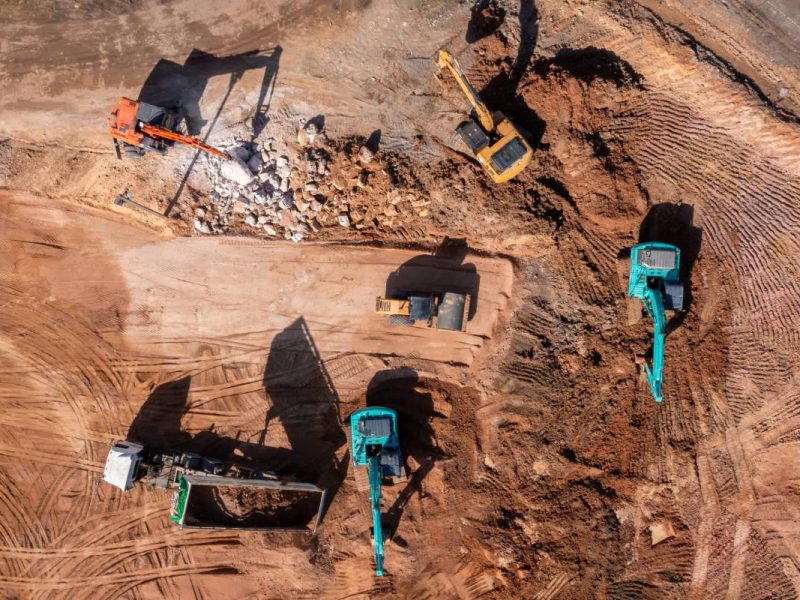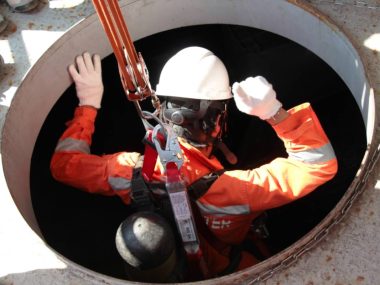Mining is one of the most logistics-heavy industries in the world. From raw materials and replacement parts to fuel, heavy equipment, safety gear, and specialised tools, the success of a mining operation hinges on how effectively and efficiently these items are delivered to remote mining sites. This is where mining site delivery services come into play — acting as the lifeline that keeps the entire operation moving.
In this article, we’ll explore why mining site delivery is essential, what factors make it complex, the benefits of reliable delivery systems, and an in-depth look at the costs associated with mining site delivery in 2024–2025.
Why Mining Site Delivery Is Important
1. Minimising Downtime
Time is money in mining. If a critical component of a drilling machine breaks and there’s no immediate replacement available on-site, operations can come to a halt. A mining site delivery service that can quickly and reliably deliver parts or equipment helps avoid production delays, saving thousands to millions of dollars per day in potential losses.
2. Remote Locations
Mining sites are often located in remote and rugged areas with limited infrastructure — sometimes hundreds of kilometres from the nearest town or city. These sites are not always easily accessible by regular transport services, making specialist delivery solutions essential. Mining site delivery ensures that goods can reach these isolated areas safely and on time.
3. Heavy Equipment and Specialised Loads
Mining operations frequently require the transport of large, heavy, or irregular-shaped items — think drill rigs, generators, excavator components, and more. These items can’t just be sent via a standard courier. Dedicated delivery systems equipped with the right trailers, cranes, and safety equipment are vital to ensure proper handling and delivery.
4. Safety and Compliance
Mining is one of the most regulated industries when it comes to health and safety. Delivery to mining sites must comply with stringent safety regulations, including load restraint, chemical transport laws, and fatigue management for drivers. Professional delivery services understand and meet these legal and safety requirements.
5. Supply Chain Efficiency
Mining site delivery plays a central role in maintaining a seamless supply chain. From fuel for machinery to PPE for workers, consumables, and technical gear, scheduled and on-demand deliveries help ensure that everything needed for daily operations is available exactly when and where it is needed.
Types of Items Delivered to Mining Sites
Some of the typical items transported to mining sites include:
- Machinery and spare parts – engines, pumps, tyres, filters
- Bulk fuels and lubricants
- Construction materials – concrete, steel, timber
- Safety and PPE gear – helmets, gloves, boots, respirators
- Electrical equipment – generators, batteries, wiring
- Chemicals and reagents – used in processing and extraction
- Catering and accommodation supplies – for remote mining camps
- Water and waste management systems
- IT and communication tools – satellite equipment, radios
Each category of delivery requires specific handling methods and often must be transported on tight schedules.
What Makes Mining Site Deliveries Challenging
Mining site logistics differ from standard freight delivery in several critical ways:
• Unpredictable Terrain and Weather
Remote mining locations often mean dirt roads, narrow access tracks, and unsealed surfaces. Heavy rains, floods, or cyclones can easily wash out roads or delay delivery schedules. Delivery providers must be flexible and prepared to deal with difficult weather and terrain.
• Special Equipment Requirements
Delivering to mines might require crane trucks, flatbeds, oversized transport, or low loaders depending on what is being shipped. This equipment must be properly maintained and suited to mine site conditions.
• Time Constraints and 24/7 Operations
Mining doesn’t stop — even on weekends or public holidays. This means delivery schedules may need to be round-the-clock. Delays in transport can have a ripple effect across production, especially if parts are required for breakdown repairs.
• Strict Entry Requirements
Most mine sites require drivers and delivery personnel to have specific inductions, safety training, and PPE. Additionally, compliance with mine site rules, fatigue management, and vehicle checks are non-negotiable.
Benefits of a Professional Mining Site Delivery Service
Hiring a delivery company experienced in mining site transport offers numerous advantages:
- Reliability – Goods arrive when and where they’re needed.
- Reduced Risk – Proper handling of dangerous goods or sensitive items.
- Efficiency – Lower fuel consumption and route planning reduce logistics costs.
- Compliance – Adherence to mine safety regulations and documentation.
- Fleet Versatility – Access to various vehicle types for different delivery needs.
How Much Does Mining Site Delivery Cost?
The cost of delivering goods to mining sites can vary significantly depending on a range of factors.
1. Distance and Location
Remote locations significantly increase transport costs. For example:
- Short-range delivery (within 100 km): AUD $200–$500
- Mid-range delivery (100–500 km): AUD $500–$2,000
- Remote delivery (500+ km or off-road access): AUD $2,000–$10,000+
Remote locations with difficult access conditions can add surcharges or require special vehicles, increasing the total cost.
2. Type and Size of Cargo
Heavy machinery, oversized items, or hazardous materials come with higher delivery fees. For instance:
- Standard equipment delivery (pallets, tools): AUD $500–$1,500
- Oversized loads (excavator parts, long pipes): AUD $3,000–$10,000+
- Specialised chemical delivery (hazardous or regulated): AUD $2,000–$5,000+
3. Urgency
Expedited or emergency deliveries cost more due to overtime labour, last-minute scheduling, and potential air freight.
- Same-day or next-day remote delivery: Add 30–100% premium
- After-hours or weekend surcharge: Add AUD $500–$2,000 depending on scope
4. Vehicle and Equipment Required
Special equipment such as low loaders, tilt trays, or crane trucks may require additional costs.
- Standard flatbed truck: Included in base delivery
- Crane truck or tilt tray: Add AUD $200–$1,000
- Escort vehicles for wide loads: Add AUD $1,000–$3,000+
5. Labour and Permits
Complex deliveries may need riggers, load coordinators, or special road permits.
- Permit fees for oversized transport: AUD $200–$800 per permit
- Labour (2–3 personnel for rigging/unloading): AUD $100–$200/hour per person
Tips to Reduce Mining Delivery Costs
- Plan in Advance: Advance booking allows for route optimisation and lower costs.
- Consolidate Loads: Deliver in bulk where possible to reduce the number of trips.
- Choose Specialist Providers: They’ll already be inducted, familiar with mining procedures, and more efficient.
- Use Local Depots: Staging items closer to site reduces long-haul costs.
- Monitor Fuel Surcharges: Fuel prices can dramatically affect freight costs — lock in rates if possible.
Choosing the Right Mining Site Delivery Partner
Not all logistics companies are equipped to handle mining deliveries. When selecting a delivery partner, look for:
- Experience with mining clients and remote operations
- Fleet range that includes heavy haulage, crane trucks, and escort vehicles
- Safety certifications and full compliance with industry regulations
- 24/7 support and GPS tracking for real-time updates
- On-time performance history and emergency delivery capabilities
Working with a proven logistics partner ensures your operation stays productive, even when challenges arise.
Final Thoughts
Mining site delivery is far more than simply transporting goods — it’s a vital component of the mining ecosystem. From keeping machines running to ensuring workers have the equipment and supplies they need, every aspect of a mine’s performance depends on timely, secure, and efficient delivery solutions.
While costs can be substantial, the cost of not having reliable delivery can be even greater. For mining operators, partnering with an experienced, well-equipped transport provider can mean the difference between costly downtime and smooth, profitable operations.
Need Help with Mining Deliveries?
If you’re seeking professional mining site delivery services, make sure you choose a provider with mining industry experience, proper certifications, and a versatile fleet to meet your needs.
Companies like Darwin Transport specialise in servicing remote and regional mining locations across the Northern Territory and beyond, offering tailored logistics solutions that meet the unique challenges of the industry. With a reputation for reliability, safety compliance, and on-time delivery, Darwin Transport is a trusted partner for heavy haulage and mine-site logistics.
Let your deliveries work as hard as your crew.






